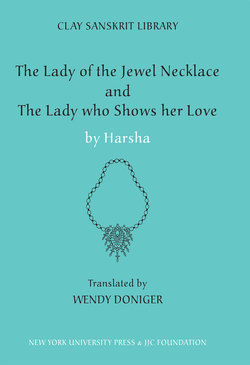Читать книгу The Lady of the Jewel Necklace & The Lady who Shows her Love - Harsha - Страница 29
На сайте Литреса книга снята с продажи.
ОглавлениеA final version, that omits the co-wife but reshuffles other familiar elements of the plot, is Subandhu’s Sanskrit prose romance, ‘Vasava·datta,’ composed c. 600 ce:
Prince Kandarpa·ketu saw Vasava·datta in a dream and set out with his friend Makaranda to find her. Resting under a tree at night, he overheard a parrot tell his mate that Vasava·datta, daughter of king Shringara·shekhara of Kusuma· pura, had dreamt of a young man so handsome that she would not choose any of the several princes who had come to her marriage-choice ceremony. Kandarpa·ketu found Vasava·datta and they eloped secretly. But on their way, an angry sage cursed Vasava·datta to become a lifeless statue until she felt the touch of her lover Kandarpa·ketu. Kandarpa·ketu searched for her until he happened upon the statue and, moved by its likeness to Vasava·datta, embraced it, thus bringing Vasava·datta back to life.
The theme of mutual dreaming comes from the story literature that the ‘Ocean of Story’ shares with the ‘Thousand and One Nights,’ but the overheard bird is a touch that Harsha will employ, and the woman mistaken for a statue made from a woman introduces yet another artform into our list:
Text
Genre
What
conceals
What
reveals
Who is
disguised
7. ‘Vasava·datta’
narrative
curse
queen
sculpture/
embrace
